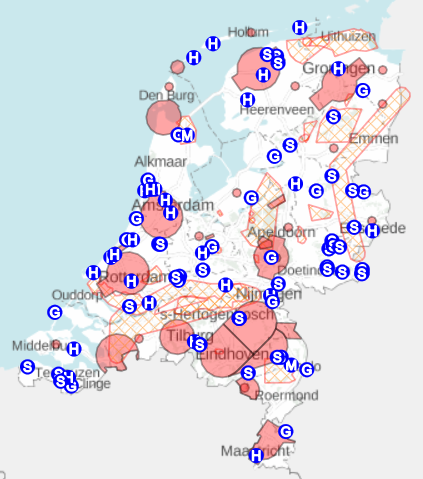Rules and Regolation drones (netherlands): Difference between revisions
(Created page with '== '''The plan''' == Amazon is working in, among others, the US, the UK, Austria and Israel on different vehicle designs that can deliver a package within 30 minutes after orderi…') |
No edit summary |
||
| (7 intermediate revisions by the same user not shown) | |||
| Line 1: | Line 1: | ||
== ''' | == '''Rules professional use of drones''' == | ||
There are no clear rules for autonomous drones stated in the legislation of the netherlands, therefore the rules for professional use will be used as rules for the autonomous drones. | |||
In the legislation drones are divided in light drones which weight up until max 4 kilogram takeoff weight, and heavy drones which weight up until 250 kilogram takeoff weight. For packaging drones the focus will be on the light drones. The drone always need to give priority to all other air- and land-traffic when they are approaching. They also need to fly in daylight and may not fly in the dark. The drones may not fly higher than 120 meter and need to have a minimum distance from crowds, compact building density, artworks, harbors, industrial areas, railways, public roads, vessels and vechicles of 50 meters. There are also No-Fly-Zones in the netherlands were no drones are allowed to fly. As you can see are the No-Fly-Zones mainly in big cities and airports. The red area's are the the No-Fly-Zones for the drones. | |||
[[File:No-Fly-Zone.png]] | |||
source: www.rijksoverheid.nl | |||
Latest revision as of 19:58, 11 February 2017
Rules professional use of drones
There are no clear rules for autonomous drones stated in the legislation of the netherlands, therefore the rules for professional use will be used as rules for the autonomous drones.
In the legislation drones are divided in light drones which weight up until max 4 kilogram takeoff weight, and heavy drones which weight up until 250 kilogram takeoff weight. For packaging drones the focus will be on the light drones. The drone always need to give priority to all other air- and land-traffic when they are approaching. They also need to fly in daylight and may not fly in the dark. The drones may not fly higher than 120 meter and need to have a minimum distance from crowds, compact building density, artworks, harbors, industrial areas, railways, public roads, vessels and vechicles of 50 meters. There are also No-Fly-Zones in the netherlands were no drones are allowed to fly. As you can see are the No-Fly-Zones mainly in big cities and airports. The red area's are the the No-Fly-Zones for the drones.
 source: www.rijksoverheid.nl
source: www.rijksoverheid.nl